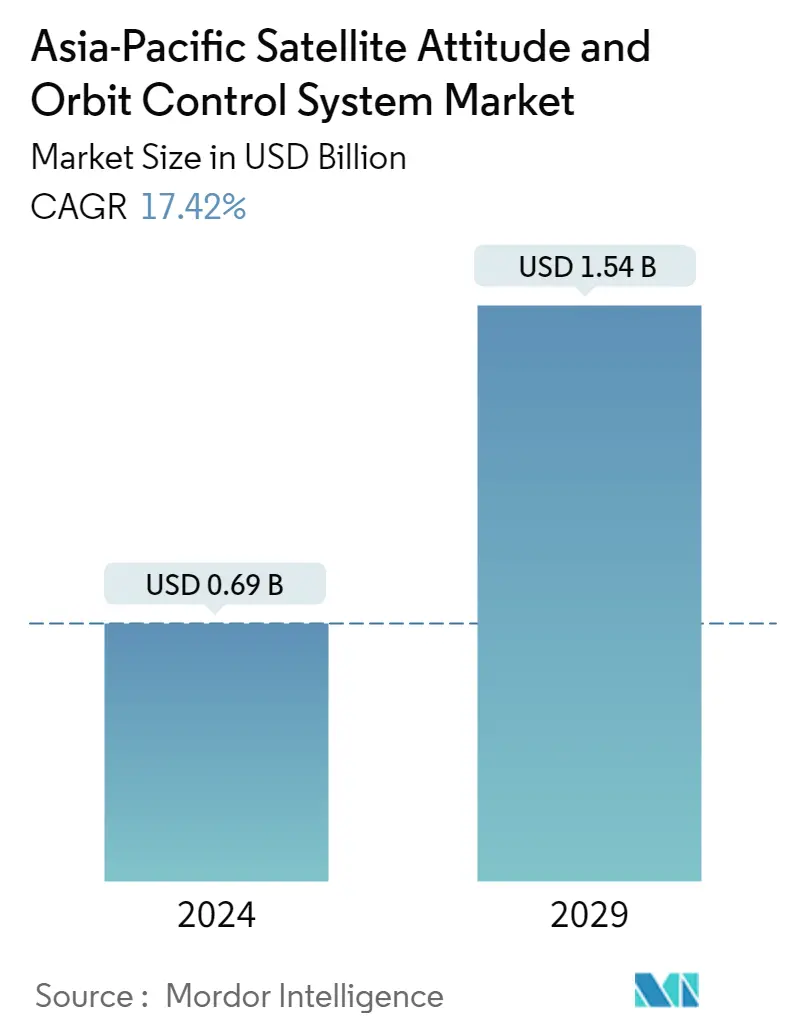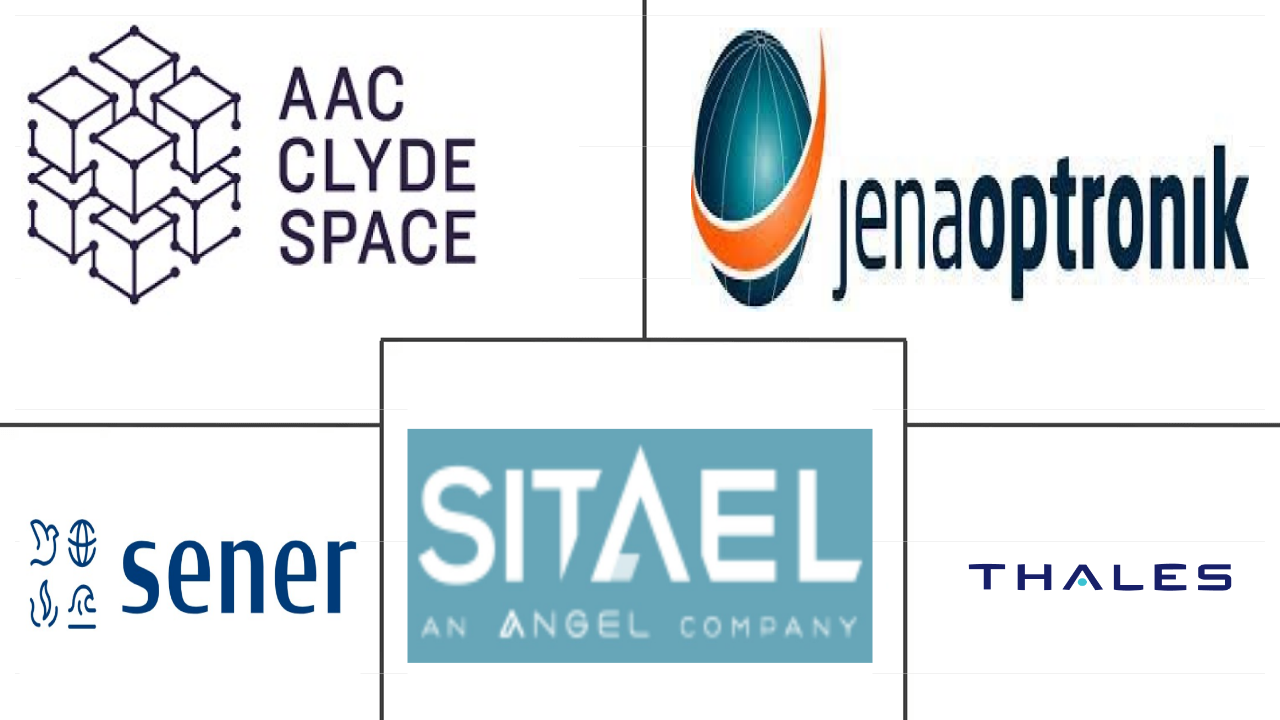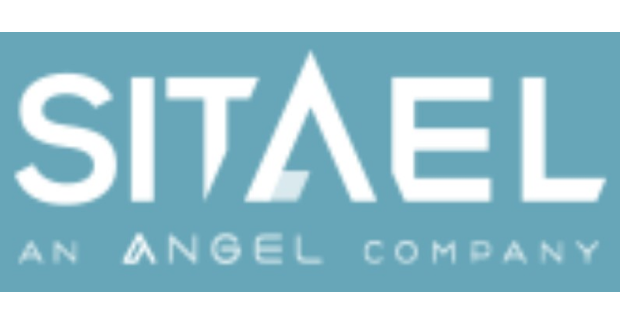Market Size of asia-pacific satellite attitude and orbit control system Industry

|
|
Study Period | 2017 - 2029 |
|
|
Market Size (2024) | USD 0.69 Billion |
|
|
Market Size (2029) | USD 1.54 Billion |
|
|
Largest Share by Orbit Class | LEO |
|
|
CAGR (2024 - 2029) | 17.42 % |
|
|
Largest Share by Country | South Korea |
Major Players |
||

|
||
|
*Disclaimer: Major Players sorted in no particular order |
Asia-Pacific Satellite Attitude and Orbit Control System Market Analysis
The Asia-Pacific Satellite Attitude and Orbit Control System Market size is estimated at USD 0.69 billion in 2024, and is expected to reach USD 1.54 billion by 2029, growing at a CAGR of 17.42% during the forecast period (2024-2029).
0.69 Billion
Market Size in 2024 (USD)
1.54 Billion
Market Size in 2029 (USD)
26.77 %
CAGR (2017-2023)
17.42 %
CAGR (2024-2029)
Largest Market by Satellite Mass
65.83 %
value share, 100-500kg, 2022
Minisatellites with expanded capacity for enterprise data (retail and banking), oil, gas, and mining, and governments in developed countries pose high demand. The demand for minisatellites with a LEO is increasing due to their expanded capacity.
Largest Market by Application
78.69 %
value share, Communication, 2022
Governments, space agencies, defense agencies, private defense contractors, and private space industry players are emphasizing the enhancement of the communication network capabilities for various public and military reconnaissance applications.
Largest Market by Orbit Class
72.49 %
value share, LEO, 2022
LEO satellites are increasingly being adopted in modern communication technologies. These satellites serve an important role in Earth observation applications.
Largest Market by End User
69.05 %
value share, Commercial, 2022
Increasing usage of small satellites for telecommunication services generates the need to deploy advanced communication satellites for commercial purposes thereby the requirement of these satellite buses has become more relevant
Leading Market Player
30 %
market share, Sitael S.p.A., 2022

SITAEL SpA is the leading player in the market. The company designs and manufactures various satellite parts and components, along with navigation systems such as guidance, navigation, and control systems (AOCS/GNC).
Satellites that are being launched into LEO are driving the market demand
- Satellite AOCS plays a critical role in maintaining the stability and precision of satellites in different orbits. The demand for LEO satellites has been growing rapidly in recent years, driven by advances in space technology and the increasing need for global connectivity. AOCS plays a crucial role in maintaining the stability and precision of LEO satellites, especially as they orbit at high speeds and are subject to various external forces, including atmospheric drag and solar radiation. As a result, there is a growing demand for AOCS for LEO satellites in the Asia-Pacific region, with China, Japan, India, and South Korea investing heavily in space-based technologies. During 2017-2022, approximately 379 satellites were launched into LEO.
- GEO satellites orbit at higher altitudes and are primarily used for broadcasting and communications. Owing to the growing demand for high-speed internet and digital communication, the demand for GEO satellites has risen in the Asia-Pacific region. During 2017-2022, approximately 66 satellites were launched into GEO.
- The Asia-Pacific region also experienced a rise in demand for MEO satellites, owing to the growing requirement for accurate and dependable navigation systems in several industries, including aviation, maritime, and defence. As a result, the region is seeing an increase in demand for AOCS for MEO satellites, with China, Japan, and South Korea spending considerably on navigation and positioning systems. During 2017-2022, approximately 24 satellites were launched into MEO. The overall market is expected to grow by 18.42% from 2023 to 2029.
Asia-Pacific Satellite Attitude and Orbit Control System Industry Segmentation
Communication, Earth Observation, Navigation, Space Observation, Others are covered as segments by Application. 10-100kg, 100-500kg, 500-1000kg, Below 10 Kg, above 1000kg are covered as segments by Satellite Mass. GEO, LEO, MEO are covered as segments by Orbit Class. Commercial, Military & Government are covered as segments by End User.
- Satellite AOCS plays a critical role in maintaining the stability and precision of satellites in different orbits. The demand for LEO satellites has been growing rapidly in recent years, driven by advances in space technology and the increasing need for global connectivity. AOCS plays a crucial role in maintaining the stability and precision of LEO satellites, especially as they orbit at high speeds and are subject to various external forces, including atmospheric drag and solar radiation. As a result, there is a growing demand for AOCS for LEO satellites in the Asia-Pacific region, with China, Japan, India, and South Korea investing heavily in space-based technologies. During 2017-2022, approximately 379 satellites were launched into LEO.
- GEO satellites orbit at higher altitudes and are primarily used for broadcasting and communications. Owing to the growing demand for high-speed internet and digital communication, the demand for GEO satellites has risen in the Asia-Pacific region. During 2017-2022, approximately 66 satellites were launched into GEO.
- The Asia-Pacific region also experienced a rise in demand for MEO satellites, owing to the growing requirement for accurate and dependable navigation systems in several industries, including aviation, maritime, and defence. As a result, the region is seeing an increase in demand for AOCS for MEO satellites, with China, Japan, and South Korea spending considerably on navigation and positioning systems. During 2017-2022, approximately 24 satellites were launched into MEO. The overall market is expected to grow by 18.42% from 2023 to 2029.
| Application | |
| Communication | |
| Earth Observation | |
| Navigation | |
| Space Observation | |
| Others |
| Satellite Mass | |
| 10-100kg | |
| 100-500kg | |
| 500-1000kg | |
| Below 10 Kg | |
| above 1000kg |
| Orbit Class | |
| GEO | |
| LEO | |
| MEO |
| End User | |
| Commercial | |
| Military & Government | |
| Other |
Asia-Pacific Satellite Attitude and Orbit Control System Market Size Summary
The Asia-Pacific Satellite Attitude and Orbit Control System (AOCS) market is poised for significant growth, driven by the increasing demand for satellite stability and precision in various orbits. The region is witnessing a surge in the deployment of Low Earth Orbit (LEO) satellites, fueled by advancements in space technology and the need for enhanced global connectivity. Countries like China, Japan, India, and South Korea are heavily investing in space-based technologies, contributing to the rising demand for AOCS. The market is also experiencing growth in the Geostationary Orbit (GEO) and Medium Earth Orbit (MEO) segments, with the latter driven by the need for reliable navigation systems across industries such as aviation, maritime, and defense. The Asia-Pacific region's robust space infrastructure, particularly in China, India, Japan, and South Korea, supports these trends, with these countries possessing comprehensive space capabilities, including satellite manufacturing and launch facilities.
The market landscape is moderately consolidated, with key players like AAC Clyde Space, Jena-Optronik, SENER Group, Sitael S.p.A., and Thales dominating the scene. The mass of satellites significantly impacts launch dynamics, with heavier satellites requiring more energy and costlier launch solutions. This factor, along with the increasing number of operating satellites, is expected to drive market expansion. The region's space activities are further bolstered by initiatives such as China's ambitious satellite constellation for internet services and South Korea's successful rocket launches. As countries in the region continue to develop indigenous space capabilities, the market is set to benefit from both commercial and military space sector demands, with satellite manufacturers enhancing production capabilities to seize emerging opportunities.
Asia-Pacific Satellite Attitude and Orbit Control System Market Size - Table of Contents
-
1. MARKET SEGMENTATION (includes market size in Value in USD, Forecasts up to 2029 and analysis of growth prospects)
-
1.1 Application
-
1.1.1 Communication
-
1.1.2 Earth Observation
-
1.1.3 Navigation
-
1.1.4 Space Observation
-
1.1.5 Others
-
-
1.2 Satellite Mass
-
1.2.1 10-100kg
-
1.2.2 100-500kg
-
1.2.3 500-1000kg
-
1.2.4 Below 10 Kg
-
1.2.5 above 1000kg
-
-
1.3 Orbit Class
-
1.3.1 GEO
-
1.3.2 LEO
-
1.3.3 MEO
-
-
1.4 End User
-
1.4.1 Commercial
-
1.4.2 Military & Government
-
1.4.3 Other
-
-
Asia-Pacific Satellite Attitude and Orbit Control System Market Size FAQs
How big is the Asia-Pacific Satellite Attitude and Orbit Control System Market?
The Asia-Pacific Satellite Attitude and Orbit Control System Market size is expected to reach USD 0.69 billion in 2024 and grow at a CAGR of 17.42% to reach USD 1.54 billion by 2029.
What is the current Asia-Pacific Satellite Attitude and Orbit Control System Market size?
In 2024, the Asia-Pacific Satellite Attitude and Orbit Control System Market size is expected to reach USD 0.69 billion.

